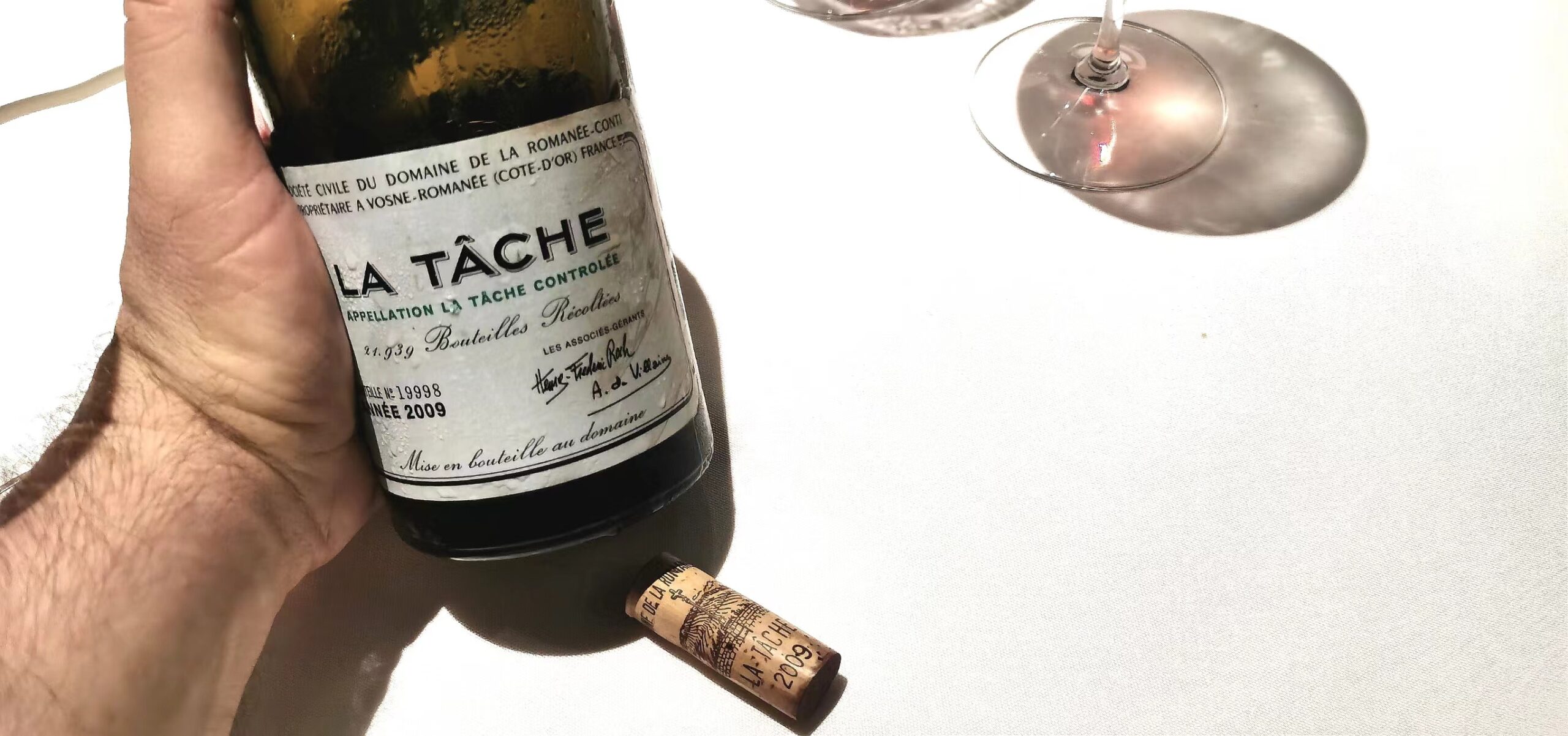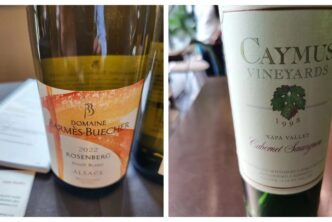Château Léoville Las Cases 1900 Saint-Julien Grand Cru Classé 98

by Robert Millman
1900? Did I perhaps mean 1990 or 1999? No, I meant 1900. Is this essay on an obituary or “in praise of what was once great”? Neither in fact. This is an entirely positive report on a very recent tasting of a bottle of the 1900 Léoville Las Cases which my dear friend, Dr. Harry Snady, brought to a dinner.
The dinner in question took place at Naro, one of New York’s relatively new breed of Haut-Korean restaurants which have come to play a dominant role in Manhattan fine dining. The lovely food is a kind of synthesis of omakase and subtle contemporary French food as applied to Korean ingredients. The blending of 5-6 ingredients is done with such finesse that the contrasts are almost always in perfect harmony. The food engages the intellect, the imagination and the palate simultaneously. Technique is impeccable. The question inevitably arises as to the best wines for such cuisine. I contributed an excellent Oregon Chardonnay from cult figure Seth Morgen Long. He favors high acid, refined flavors in a tightly framed manner not unlike the Meursaults and Pulignys of his mentor Etienne de Montille in Burgundy. However, despite my best intentions and thoughts on the matter, I found that the austerity and purity of the wine did not work especially well with the Korean ingredients. In retrospect, I think a first-rate Grüner Veltliner or perhaps a rich Alsatian Riesling might have synthesized with the food more effortlessly.
But the real stars of the evening where the two mature Bordeaux which Dr. Snady brought to celebrate many years of friendship centered on the glories of well-aged wine. The “baby” was the 1970 Chateau Figeac, likely the most singular wine made in St. Emilion. With its unique blend of roughly 33% each of Cabernet Sauvignon, Cabernet Franc and Merlot, the wine always offers a firm backbone and dark brooding flavors that demand 20-30 years of aging. At 53+ years, this 1970 has retained the richness inherent to the warm 1970 vintage which worked extremely well with the intense minerality and firm (yet by now in the background) tannin frame which suffused the wine.
A tamed Figeac is a splendid thing. But the real “Queen of the Night” was the all but miraculous bottle of 1900 Léoville Las Cases. (The accompanying photograph shows a tattered label, as it should be after 124 years of lying around, but with the 00 visible near the bottom.) This was a négociant bottling as was the norm for so long in Bordeaux. Nowadays, we are used to estate-bottled Bordeaux that a négoce bottling immediately raises questions of authenticity. In truth, it was very much the norm until the late 1920s. A reputable négociant was in fact a virtual guarantee that the barrels had been purchased from the Château in question. Importantly, Dr. Snady has owned his bottles of various 1900 Bordeaux for at least 30 years, well before the financial rewards of fake bottling became so ubiquitous. Dr. Snady helped the sommelier decant the wine, a practice which could make for an absorbing YouTube video.
Now to the wine: Firstly, the color was remarkable for a 123+ year old claret (as the British called their beloved Bordeaux) with a dark reddish core, with a modest browning on the edges which one might have expected in a 40-50 years old wine from a great vintage. The twin vintages of 1899 and 1900 were indeed of such splendid quality that their equal would not happen until the 1928/1929 pair, almost 30 years later. Edmund Penning Rowsell in his magisterial The Wines of Bordeaux (2nd edition, 1989) devotes nearly ten pages describing his experiences with these vintages, especially the 1900s which were praised at birth for their “remarkable softness and delicacy”. This early beauty did not, however, preclude their amazing durability. (Remarkably, the quantity of wine produced in both 1899 and 1900 was substantial; it follows that the longevity of wines from those vintages cannot be attributed to reduced yields as was the case in 1945 and 1961, for example). The bouquet of the 1900 Las Cases was what I would call liquified terroir—all the fruit had absorbed into the juice which smelled of iron fillings, preserved black truffle and long-aged tobacco. The palate was in essential harmony with the bouquet with an added factor of a dense, chewy mouth feel and lengthy persistence. There was nothing faded about the wine. I would think that the wine was very much as it was on this occasion many years before. I have rarely experienced a wine which has defied aging and aeration so thoroughly. The firmness, not hardness, of 1900 is a hallmark of this property. The wine somehow maintained its integrity of flavor and texture with all the food we ate: A remarkable achievement. I have tasted wines that gave me more pleasure but few which earned such awe-inspiring respect. There is no way to score a 100+ year old wine which is still speaking with vigor and personality. Drinking Window: 2024- 2044 (possibly).
Domaine de la Romanée-Conti 2009 La Tâche Grand Cru 98

by Ian D’Agata
Good full saturated red-ruby. Sweet spices, soy sauce and candied tangerine zest complicate the blackberry, blueberry and strawberry aromas on the scented, exceptionally layered and deep nose that is lifted by a bright violet topnote. In the mouth, subtle flavours of Oriental spices, licorice and tobacco dominate nuances of macerated dark red cherry and blueberry nectar. And are nicely framed by serious but polished, noble tannins. Complex, full-bodied and suave, this finishes supremely long and mineral. Drinking window: 2024-2055.
Though the Domaine de la Romanée-Conti’s Romanée-Conti grand cru bottling is headline-grabbing and usually considered the single most important red wine in the whole world, wine lovers and moneyed collectors know that the La Tâche by the same estate is essentially just as good, if a completely different wine. While the 2009 La Tâche started life out slightly sullen and somewhat dumbed down as is often the case with this magnificent wine that releases its charms only slowly over time, there was never any doubt in my mind it is one of the finest La Tâche wines I have tasted in the last twenty years. Offering that vineyard’s trademark power but also the ethereal, penetrating quality that separates and elevates this grand cru from almost all other famous Burgundian grand crus, the 2009 La Tâche is a simply marvelous wine. If anything, the 2009 strikes me as showcasing the warmth and strength of the 2009 vintage, but still manages to successfully buffer, even harness, said power with La Tâche’s out-of-the-ordinary amounts of grace, nuance and refinement. The use of whole bunches also marks this vintage of La Tâche fairly prominently.

 中文
中文



